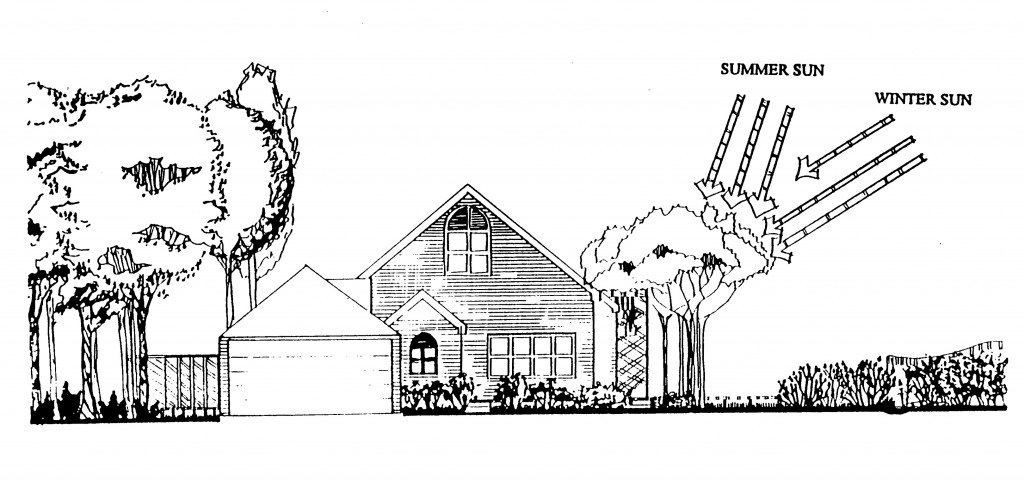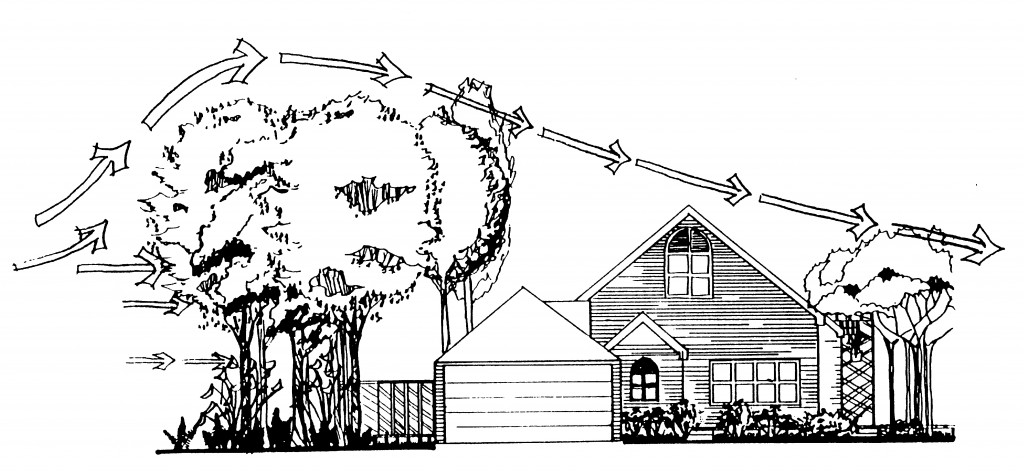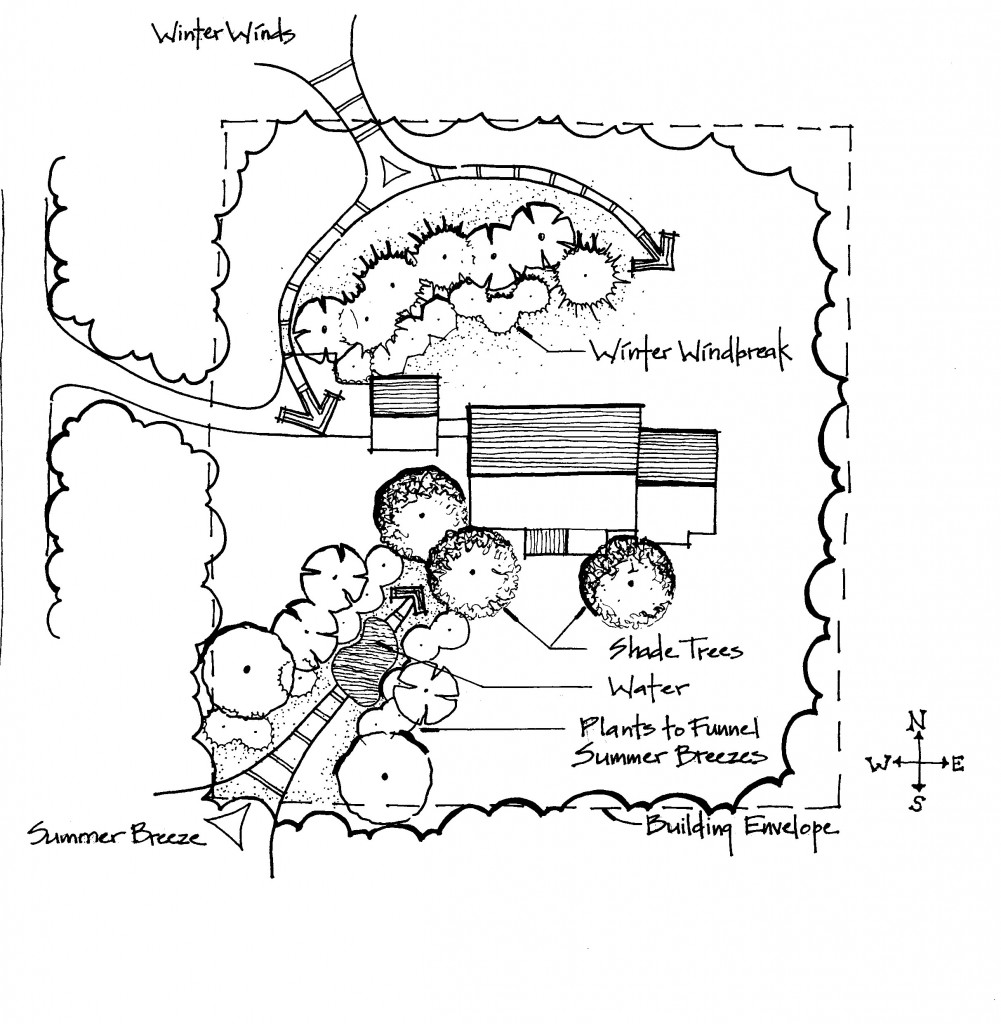A landscape that is designed with energy efficiency in mind means thinking of the seasons, in particular the cold winters and warm summers. The Southern Appalachian region is blessed with moderate temperatures throughout the year but we can be subject to several weeks of very cold weather. In the mountains, a slight change in elevation translates into a change in temperature by as much as 15 degrees! In the winter, this can take a cold day and turn it into a bone chilling one. So while you can dress in layers and use blankets to keep warm inside your house as a way to reduce seasonal energy costs, landscape design can make your indoor living environment more comfortable year round without all of the shivering!
1. The sun heats for free
A southern orientation allows low-angle winter sunlight to enter a home in the winter and maximizes southern exposure for day lighting and solar access during the rest of the year. For maximizing the benefits of natural solar heat gain, the longest face of a building should point south and have plenty of windows to let in the sunlight. Design features of a house and materials used indoors can also help with thermal mass to take full advantage of the suns warming rays. If the topography is suitable, entire developments can be designed for passive solar benefits. A good example of this is Davenport Park, a new development in West Asheville, NC.
2. Accessing or shading the sun may have you re-thinking if money does grow on trees
Trees are terrific for blocking sun or allowing it to pass on through. This can be done by locating a house to take advantage of shade from existing trees or by planting large deciduous trees near a building/house. By doing this the following benefits can be realized:
- During winter the sun can reach far inside a building due to its low angle. The deciduous trees, which are leafless in winter, can allow as much as 50% of the sun’s rays through to heat the house.
- During summer, up to 96% of the hot summer sun’s direct rays can be blocked by deciduous trees, which can translate to an energy cost savings of up to 30%.
- Shading the roof of a house from the summer sun can reduce temperatures as much as 10 degrees.

3. Get a good defense and block the winter winds
Winter winds can have a major impact on a building’s heating needs. To block or deflect the prevailing winter winds from reaching a house a dense mix of evergreen trees and shrubs should be planted. These trees and shrubs can be located to provide the following benefits:
- A dense winter windbreak can reduce a 30 mph wind to a 10-15 mph wind.
- A planted windbreak that is 30’ high can push the flow of air up and over a building and can affect wind speed as much as 900 feet away.
- A well placed windbreak can provide an energy cost savings of as much as 20%.

4. Let the summer breeze in
Just as winter winds can be blocked, summer breezes can be “funneled” towards our living spaces. To collect and funnel the effects of cooling summer breezes towards the house, it is recommended that evergreen and deciduous trees and shrubs be planted in a V-shaped pattern, tapering as it nears the structure. For additional cooling add a water feature so the summer breezes blow the surrounding air towards the building. Air passing over a water feature can add to the cooling effect of a funneled summer breeze.

Landscapes can be designed in such a way that they not only help reduce energy and resource consumption but also help save costs. Remember, many of these principles can apply to most anywhere in the US, but always require a site analysis to document the direction of the winter and summer winds. You will quickly realize the benefits afforded by keeping these simple tips in mind as you form your landscape!
-David Tuch, Vice President and Landscape Architect
